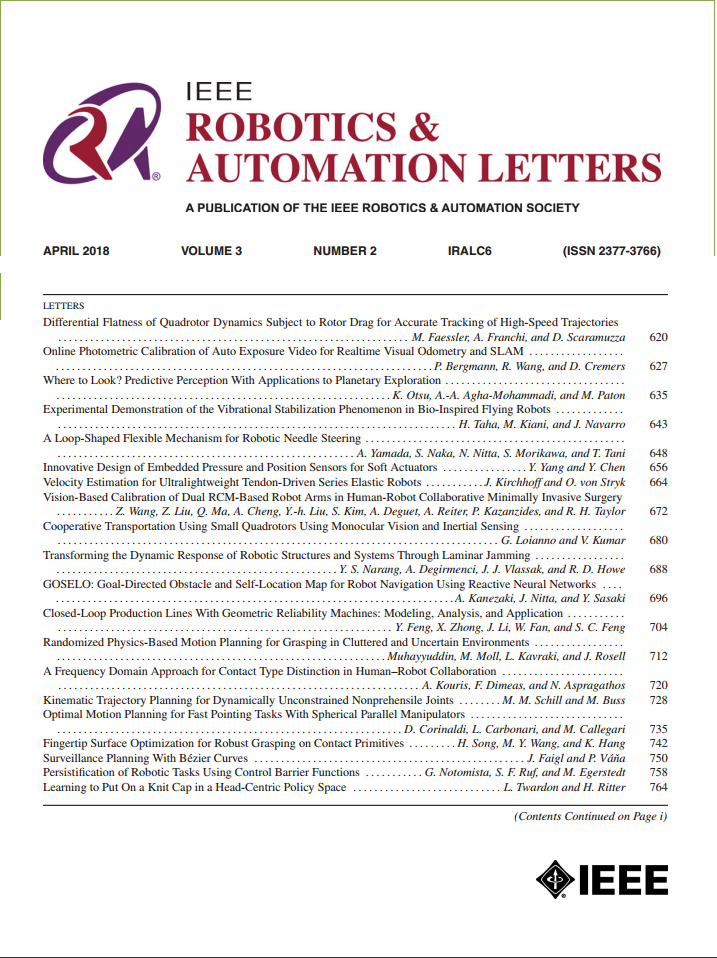Dynamic Behavior Cloning With Temporal Feature Prediction: Enhancing Robotic Arm Manipulation in Moving Object Tasks
IF 4.6
2区 计算机科学
Q2 ROBOTICS
引用次数: 0
Abstract
In numerous real-world applications, the ability to accurately perceive and respond to dynamic changes in the environment, while also maintaining the flexibility to transfer learned skills across different tasks, is crucial for the effective operation of robotic arms. Behavior cloning is particularly promising in this context due to its data efficiency and strong task transferability, enabling robots to quickly adapt to new tasks by learning from demonstrations. However, traditional behavior cloning methods, which rely primarily on the observation and state information of the current frame to predict subsequent actions, fall short in dynamic contexts due to their static nature. To address this limitation, we propose Dynamic Behavior Cloning with Temporal Feature Prediction (DBC-TFP), which integrates with behavior cloning by leveraging historical frames to capture dynamic features crucial for predicting future scene images. This method uses a loss function based on the mean squared error (MSE) between the predicted future scene image and the ground truth counterpart, improving the model's accuracy in action prediction for dynamic scenarios. To evaluate our approach, we design a benchmark comprising eight task scenarios, including six foundational tasks and two advanced tasks. Experimental results on this benchmark demonstrate that DBC-TFP significantly improves the success rate of behavior cloning in dynamic scenarios compared to traditional behavior cloning methods.基于时间特征预测的动态行为克隆:增强机械臂在运动目标任务中的操作
在许多实际应用中,准确感知和响应环境动态变化的能力,同时保持在不同任务中转移所学技能的灵活性,对于机械臂的有效操作至关重要。由于其数据效率和强大的任务可转移性,行为克隆在这种情况下特别有前途,使机器人能够通过从演示中学习来快速适应新任务。然而,传统的行为克隆方法主要依赖于当前框架的观察和状态信息来预测后续动作,由于其静态特性,在动态环境中存在不足。为了解决这一限制,我们提出了带有时间特征预测的动态行为克隆(DBC-TFP),它通过利用历史帧来捕获对预测未来场景图像至关重要的动态特征,从而与行为克隆相结合。该方法使用基于预测的未来场景图像与地面真实值之间均方误差(MSE)的损失函数,提高了模型对动态场景的动作预测精度。为了评估我们的方法,我们设计了一个包含八个任务场景的基准,包括六个基本任务和两个高级任务。在该基准上的实验结果表明,与传统的行为克隆方法相比,DBC-TFP显著提高了动态场景下行为克隆的成功率。
本文章由计算机程序翻译,如有差异,请以英文原文为准。
求助全文
约1分钟内获得全文
求助全文
来源期刊

IEEE Robotics and Automation Letters
Computer Science-Computer Science Applications
CiteScore
9.60
自引率
15.40%
发文量
1428
期刊介绍:
The scope of this journal is to publish peer-reviewed articles that provide a timely and concise account of innovative research ideas and application results, reporting significant theoretical findings and application case studies in areas of robotics and automation.
 求助内容:
求助内容: 应助结果提醒方式:
应助结果提醒方式:


